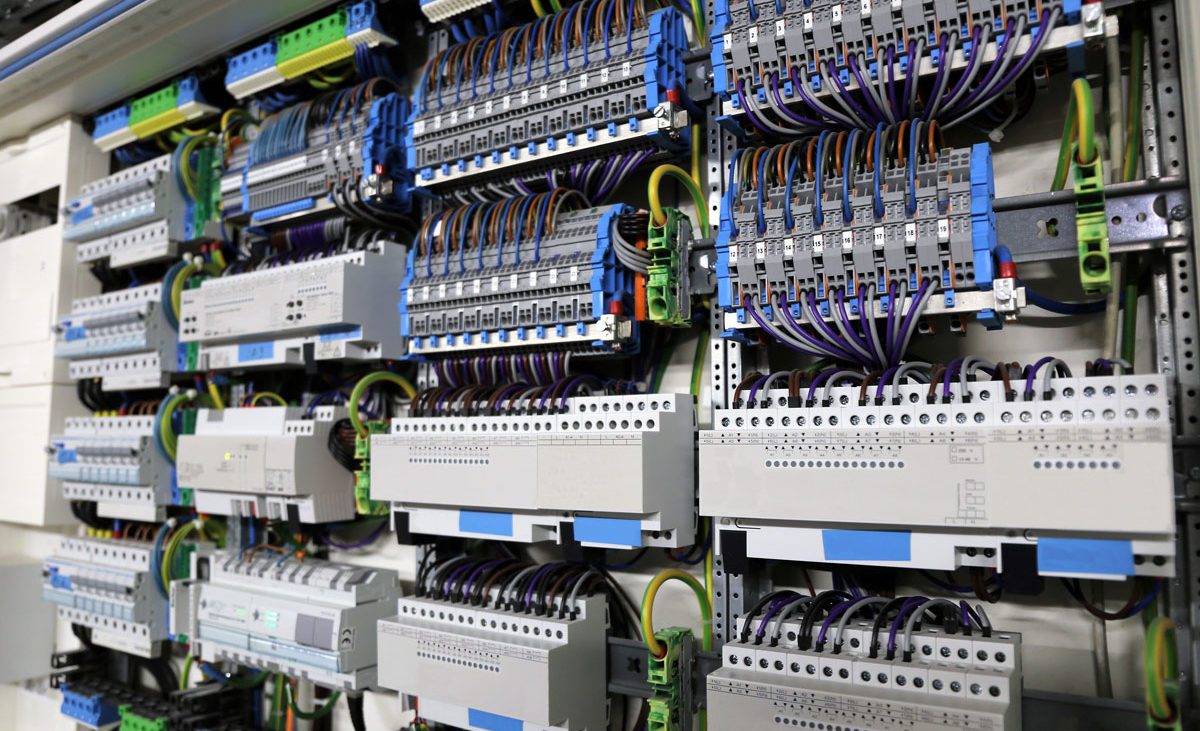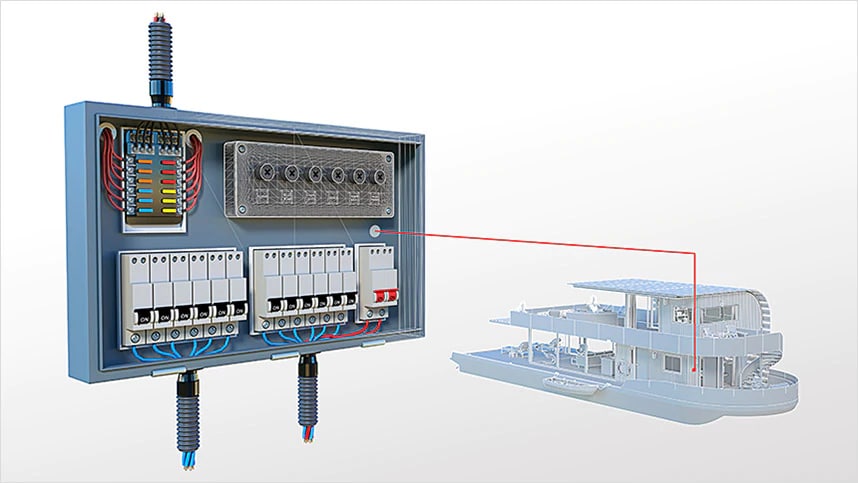Efficient Electrical Load Calculation Services for Upcoming Project
Efficient Electrical Load Calculation Services for Upcoming Project
Blog Article
Innovative Electrical Design Providers for Modern Infrastructure
The evolution of modern infrastructure requires innovative electrical design solutions that not just boost functional effectiveness however also address sustainability challenges. As urban atmospheres expand progressively intricate, including technologies such as clever grids and renewable resource resources ends up being vital. These innovations not only guarantee to optimize energy intake however likewise foster durability versus future needs. The landscape of electric design is undergoing rapid change, motivating a better examination of arising patterns and their ramifications for long-term infrastructure stability. What might the future hold for those that welcome these innovative methods?
Relevance of Ingenious Electrical Design
Innovative electric design plays a vital role in modern-day infrastructure, affecting not only efficiency but likewise sustainability. As cities evolve and the demand for power rises, the need for innovative electrical systems becomes critical. These systems must not only satisfy present needs however additionally anticipate future growth and technological developments.
A well-executed electric design can considerably minimize power intake, consequently reducing functional costs and minimizing environmental effect. By including sustainable energy sources, such as photovoltaic panels and wind turbines, innovative layouts can boost power self-reliance and strength. Additionally, wise grid innovations enable real-time monitoring and monitoring of power distribution, enhancing performance and reducing waste.
Security is an additional important aspect of electric design. Carrying out rigorous criteria and advanced technologies can minimize dangers related to electrical failings, making certain a protected setting for companies and homeowners alike. Additionally, ingenious styles facilitate versatility, allowing infrastructures to incorporate emerging modern technologies seamlessly.
Trick Trends in Electric Design
As the landscape of electrical design remains to evolve, numerous vital fads are forming the future of the industry. One substantial trend is the assimilation of wise modern technology right into electrical systems. The spreading of the Net of Points (IoT) has allowed real-time monitoring and control of electrical devices, boosting effectiveness and promoting predictive maintenance.
One more trend is the growing focus on modular design. This approach enables adaptable and scalable remedies, making it possible for framework to adjust to altering demands without comprehensive restorations. In addition, the usage of innovative simulation tools and Structure Information Modeling (BIM) is becoming significantly widespread, improving the design procedure and improving partnership among stakeholders.
Moreover, advancements in materials scientific research are leading to the development of lighter, more durable, and energy-efficient parts. This innovation is particularly crucial for high-performance buildings and facilities tasks.
Last but not least, there is a significant change towards data-driven decision-making - electrical design services. Leveraging data analytics assists designers optimize systems for efficiency and cost-effectiveness. With each other, these trends symbolize a transformative era in electrical design, enhancing performance, sustainability, and strength in modern-day framework
Lasting Energy Solutions
Lasting power options are progressively coming to be a vital emphasis in electrical design, mirroring a wider commitment to ecological responsibility and source efficiency. These remedies aim to reduce ecological impact while optimizing energy intake in various infrastructures, from domestic buildings to big industrial centers.
Among the foremost methods includes the assimilation of eco-friendly power resources, such as photovoltaic panels and wind turbines, into electric systems. This not only decreases reliance on fossil fuels however additionally boosts energy strength. In addition, innovative power storage systems, such as advanced batteries, allow efficient administration and distribution of power, guaranteeing that surplus power created during height production can be utilized throughout high need periods.
In addition, energy-efficient design methods are being adopted to enhance general system efficiency. This includes using energy-efficient lights, heating and cooling systems, and smart building technologies that keep an eye on and adapt power usage based upon tenancy and environmental problems.
Smart Grid Technologies
The implementation of sustainable power remedies normally leads to the expedition of clever grid modern technologies, which play a pivotal duty in updating electric systems. Smart grids take advantage of progressed interaction innovations and data analytics to enhance the integrity, effectiveness, and sustainability of electrical power circulation. By integrating electronic modern technology with traditional grid facilities, these systems promote real-time surveillance, automated control, and improved decision-making abilities.
Among the key functions of clever grids is their capability to fit eco-friendly energy sources, such as solar and wind power. This versatility not only reduces dependence on nonrenewable fuel sources but additionally enables a more decentralized energy production model. Clever grids make it possible for need response programs, where consumers can change their energy usage based on real-time rates, consequently advertising energy preservation and lowering peak load needs.
In addition, clever grid modern technologies improve grid durability by making it possible for quicker identification and resolution of blackouts, ultimately lessening downtime. With anticipating upkeep and analytics, utilities can improve and optimize procedures solution shipment. As cities and neighborhoods remain to develop, clever grid innovations are crucial for constructing a lasting and efficient electrical infrastructure that fulfills the needs of modern-day society.

Future-Proofing Framework
To make sure lasting feasibility and versatility, future-proofing framework is necessary in the swiftly advancing landscape of electrical design solutions. As modern technology developments and energy needs change, it is essential that electrical systems are helpful site designed with adaptability in mind. This requires integrating scalable solutions that can accommodate future upgrades without demanding substantial overhauls.

Furthermore, sustainability has to be a keystone of future-proofed layouts. Using renewable resource resources, such as best site solar and wind, and optimizing power effectiveness lower dependency on nonrenewable fuel sources, lining up with worldwide efforts to combat environment adjustment.
Conclusion
To conclude, ingenious electric design services play an essential role fit modern infrastructure. By prioritizing performance, versatility, and sustainability, these services deal with the advancing demands of energy systems. The integration of smart grid modern technologies and sustainable power remedies improves durability and minimizes functional expenses. Future-proofing framework with advanced simulation tools and modular techniques guarantees that electrical systems stay responsive to changing requirements, ultimately adding to a much more energy-independent and lasting future.
A well-executed electrical design can substantially decrease energy consumption, consequently decreasing functional prices and reducing environmental influence. By integrating renewable power resources, such as solar panels and wind turbines, ingenious styles can improve power self-reliance and resilience. In addition, innovative energy storage systems, such as innovative batteries, allow effective management and circulation of power, making certain that surplus power generated throughout top manufacturing can be used throughout high need durations.
Clever grids from this source allow demand response programs, where customers can adjust their power usage based on real-time pricing, therefore advertising energy conservation and lowering peak load needs. (industrial electrical design)
As technology breakthroughs and power needs shift, it is crucial that electric systems are created with adaptability in mind.
Report this page